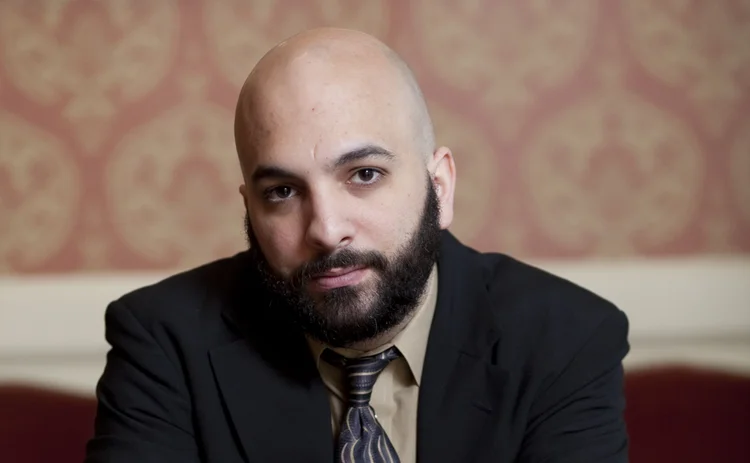Anthony Malakian: Can 10,000 Needles Rouse a Bear Economy?

Jesper Koll is a charismatic man. Tall and slender, in Japan he is noticeable. When he’s on stage, he commands a room. Koll is German and speaks his mother tongue fluently, but on this day—while giving the keynote address at this year’s Tokyo Trading Architecture Summit—he opts for Japanese, except when he answers a question from a Westerner; then he replies in perfect American English as though he was born in Muskogee, Okla.
Koll has called Japan home since 1986. He is JPMorgan’s director of Japan equity research and is widely considered an expert on the Japanese market. He is bullish on the Japanese economy—some say a bit too bullish—but when it comes to economics, there’s rarely universal agreement.
“Four years ago, I was worried Japan would go dead; it was that bad,” said Koll in Japanese, translated for the English speakers in the audience. “I was embarrassed about this country’s politics and worried about what would happen to this country. But now I’m optimistic.”
Stability
The reason for Koll’s optimism is centered on stability. In recent history, the Japanese prime minister has rarely stayed in office for longer than two years. Since 1989, seven prime ministers held the office for 365 days or fewer. Koll says this has created a state of constant worry over regime change and what new regulations will come down the pike as a result. Unpredictability is not good for finance.
In December 2012, Shinzō Abe was elected to his second term as prime minister. Starting in September 2006, his first term lasted just 365 days. With his second stab at the job, Abe implemented a fiscal plan to spur Japan’s stagnant economy. The plan is based around “three arrows,” which represent a huge fiscal stimulus, monetary easing from the Bank of Japan, and structural reforms.
Hope and stability are necessary components when IT departments are looking to get their COO and CFO to sign off new projects.
Koll did not reveal his personal opinion of Abe, but said there is much hope that the plan will help grow Japan’s economy and keep Abe in office for more than 730 days. “If you’d like to know if I like Mr. Abe or not, have a drink with me, but there is a lot of hope,” Koll said. “Maybe he’ll last three or five or six years, but for now, when it comes to financial policies, things are clear—there is a lot of predictability.”
10,000 Needles
“The three arrows have often been talked about,” Koll said. “I don’t think we should use the three arrows so often—it’s actually 10,000 needles. If it was just three arrows then in three to four years everyone would be feeling better. When it comes to the arrows, everyone talks about a big bang, but this is impossible. But step-by-step improvements—with the analogy of the needles—would be possible.”
In June, Abe will deliver an update on his growth strategy. For the time being, Koll said, there is a stable government and people’s trust in the financial sector is improving.
Good Economy = Tech Investment
In finance, everything can be tied to technology. Indeed, regulatory changes will need IT support and investment. Mergers mean the meshing of technology stacks. And a good economy is a boon for IT investment, as opposed to the financial crisis of 2008, which saw the gutting of IT departments and a freeze on spending.
Hope and stability are necessary components when IT departments are looking to get their COO and CFO to sign off new projects. And just as important as the hardware are the high-end developers and programmers that firms need to poach away from more cutting-edge technology companies.
Koll has described himself as Japan’s last optimist. When he speaks, it’s easy to believe what he says. Yet while Japan’s banks are strong, there are concerns about Japan’s declining working-age population and the possibility that Abe’s stimulus will wear off and the economy will once again stagnate.
But if Japan’s buy side is going to match those of the US and the Western Europe, now is the time for optimism—and IT investment.
Only users who have a paid subscription or are part of a corporate subscription are able to print or copy content.
To access these options, along with all other subscription benefits, please contact info@waterstechnology.com or view our subscription options here: https://subscriptions.waterstechnology.com/subscribe
You are currently unable to print this content. Please contact info@waterstechnology.com to find out more.
You are currently unable to copy this content. Please contact info@waterstechnology.com to find out more.
Copyright Infopro Digital Limited. All rights reserved.
As outlined in our terms and conditions, https://www.infopro-digital.com/terms-and-conditions/subscriptions/ (point 2.4), printing is limited to a single copy.
If you would like to purchase additional rights please email info@waterstechnology.com
Copyright Infopro Digital Limited. All rights reserved.
You may share this content using our article tools. As outlined in our terms and conditions, https://www.infopro-digital.com/terms-and-conditions/subscriptions/ (clause 2.4), an Authorised User may only make one copy of the materials for their own personal use. You must also comply with the restrictions in clause 2.5.
If you would like to purchase additional rights please email info@waterstechnology.com
More on Emerging Technologies
Google, CME say they’ve proved cloud can support HFT—now what?
After demonstrating in September that ultra-low-latency trading can be facilitated in the cloud, the exchange and tech giant are hoping to see barriers to entry come down, particularly as overnight trading looms.
Waters Wavelength Ep. 342: LexisNexis Risk Solutions’ Sophie Lagouanelle
This week, Sophie Lagouanelle, chief product officer for financial crime compliance at LNRS, joins the podcast to discuss trends in the space moving into 2026.
Citadel Securities, BlackRock, Nasdaq mull tokenized equities’ impact on regulations
An SEC panel of broker-dealers, market-makers and crypto specialists debated the ramifications of a future with tokenized equities.
BlackRock and AccessFintech partner, LSEG collabs with OpenAI, Apex launches Pisces service, and more
The Waters Cooler: CJC launches MDC service, Centreon secures Sixth Street investment, UK bond CT update, and more in this week’s news roundup.
Tokenized assets draw interest, but regulation lags behind
Regulators around the globe are showing increased interest in tokenization, but concretely identifying and implementing guardrails and ground rules for tokenized products has remained slow.
CME, LSEG align on market data licensing in GenAI era
The two major exchanges say they are licensing the use case—not the technology.
Waters Wavelength Ep. 341: Citi’s Pitts and Topa
This week, Citi’s Michele Pitts and Marcello Topa join Wei-Shen to talk about UK and EU T+1.
Robeco tests credit tool built in Bloomberg’s Python platform
This follows the asset manager’s participation in Bloomberg’s Code Crunch hackathon in Singapore, alongside other firms including LGT Investment Bank and university students.







